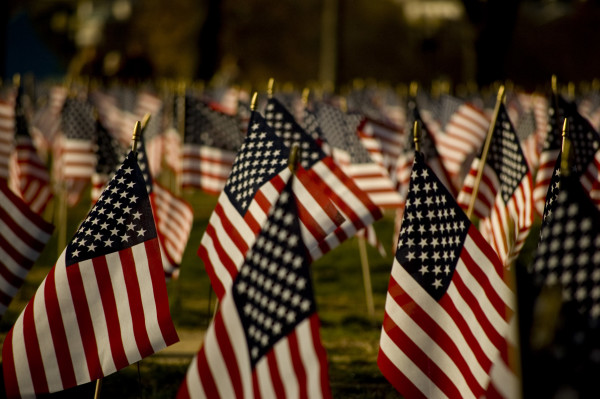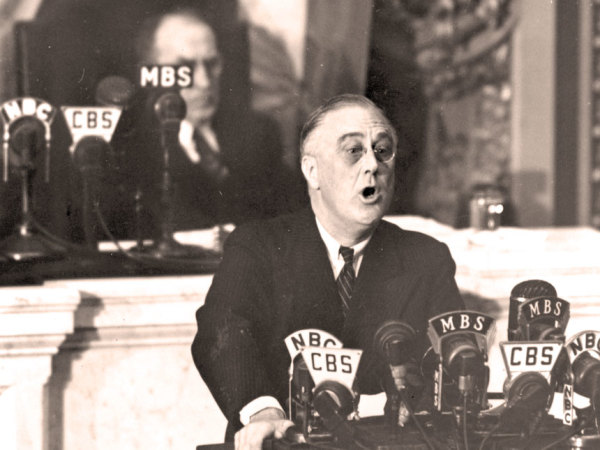Defining Freedom
“Freedom is the freedom to say that two plus two make four. If that is granted, all else follows.”
― George Orwell, 1984
We read about freedom, dream about freedom, celebrate the idea of freedom, advocate and hope for freedom, but what do we mean by “freedom”?
“Freedom” means many things to many people. Freedom can mean having the opportunity to vote for particular ideas or for people who best represent our views. Freedom can refer to the concept of freedom of speech: the ability to freely voice personal opinions or perspectives. Others may understand freedom in a financial context, where people seek to free themselves of financial debt, outstanding credit and burdensome loans.

But what does true freedom look like? Does it look like a voter’s ballot or someone walking out of prison? Is it seen in being able to buy anything a person wants or in owing anything to anyone?
Freedom is defined by Merriam Webster as the quality or state of being free, such as:
- the absence of necessity, coercion, or constraint in choice or action.
- liberation from slavery or from the power of another.
- boldness of conception or execution.
- a political right.
Freedom is more complicated than being able to do whatever we want. Taken too far, that approach would lead to dangerous anarchy—every person for themselves! Certainly freedom can mean the right to do, think, believe, speak, worship, gather, or act as one pleases, but only until your choices start to infringe on another person’s freedoms.
Consider each of our freedoms as fitting into one of two categories: “freedoms of” and “freedoms from.” This point was made by President Franklin Delano Roosevelt in his State of the Union Address delivered on January 6, 1941:
“We look forward to a world founded upon four essential human freedoms.
The first is freedom of speech and expression — everywhere in the world.
The second is freedom of every person to worship God in his own way — everywhere in the world.
The third is freedom from want — which, translated into world terms, means economic understandings which will secure to every nation a healthy peacetime life for its inhabitants—everywhere in the world.
The fourth is freedom from fear — which, translated into world terms, means a world-wide reduction of armaments to such a point and in such a thorough fashion that no nation will be in a position to commit an act of physical aggression against any neighbor—anywhere in the world.
That is no vision of a distant millennium. It is a definite basis for a kind of world attainable in our own time and generation.”

President Franklin Delano Roosevelt Delivers the State of the Union in 1941
In the same speech, Roosevelt said:
“There is nothing mysterious about the foundations of a healthy and strong democracy. The basic things expected by our people of their political and economic systems are simple. They are:
- Equality of opportunity for youth and for others.
- Jobs for those who can work.
- Security for those who need it.
- The ending of special privilege for the few.
- The preservation of civil liberties for all.
- The enjoyment of the fruits of scientific progress in a wider and constantly rising standard of living.
These are the simple, basic things that must never be lost sight of in the turmoil and unbelievable complexity of our modern world. The strength of our economic and political systems is dependent upon the degree to which they fulfill these expectations.”
In other words, if the nation loses its liberties, freedoms and opportunities, the nation shall be no more.
Securing “freedom from fear” and “freedom from want” almost always includes collective, organized action. That kind of activity is often carried out most effectively and efficiently (although, admittedly, not perfectly) by a governing body of some sort. If we want to live in a society where freedoms are protected and where the opportunity to exercise freedom is assured, we have to rely on some form of governance.
Section Objective:
Students will define what “freedom” means to them and express an appreciation for and understanding of some of the freedoms and rights allotted to United States citizens.
Discussion Questions:
- What does “freedom” mean to you?
- What freedoms are most important to you? If you had to choose a most important and least important freedom, what would they be and why?
- Do you feel that certain freedoms you are supposed to enjoy are restricted in some way? How?
Citations / Further Exploration:
The “Four Freedoms” Speech: https://www.facinghistory.org/universal-declaration-human-rights/four-freedoms-speech
Freedom Definition: https://www.merriam-webster.com/dictionary/freedom
Exercise: What Can You Do?
Subject(s): English, Theatre, History
Goals:
Students will be able to:
- use examples from their knowledge and experience to support the main ideas of their oral presentation.
- distinguish one’s own ideas from information created or discovered by others.
- promote collaboration with others both inside and outside the classroom.
- better understand their own rights as a U.S. citizen.
Supplies: Paper, pens, pencils, markers, crayons
Set Up:
- Clear space for class to be able to move, walk around, and physically create in.
- Hand everyone a crayon/marker/pen and a sheet of paper.
- Invite students to write their own definition for the word “freedom.” Have them share their definition with a partner.
- Once they’ve discussed their definitions with a partner, invite students to flip over their paper. The students now have two minutes to write or draw out a list of all of the rights, freedoms and things that they are allowed to do as citizens of the United States. Two minutes to write or draw as many as they can think of!
- At the conclusion of the two minutes, ask the students to read off the rights and freedoms they listed. With each right or freedom they come up with, write down each one on its own individual slip of paper (there’s no need to do this with repeat answers.) Make sure each right or freedom is understood at at least a basic level by the students.
- Once you’ve made a slip for each right/freedom, lay them all out across a table, the floor, or across your board. Your explanation to the students may sound something like this: “We’re going to rank these from the least important right or freedom to the most important, moving left to right. There will almost certainly be some disagreement in this and that’s alright. Acknowledge it and move on. Here’s how it will work. One of you will come up and move them into what you think is the proper ranking order. Once that person has completed ranking, they will sit down. I’ll read their ranking order off. If any of you disagree, you may come up and make adjustments. We’ll keep going through this process until we’re all in agreement. This might take a while.”
- Note: Alternatively, if space and class size allow, you may have them all work on it collectively at the same time. This is how we at Signature did it when we did the exercise and it worked really well (our group was around 20 people.) The advantage of this approach is that it does allow them to discuss what they’re thinking as they go. More overt collaboration.
Discussion:
What is required for a freedom or right to exist? What sort of society promotes freedoms? What sort of society can lead to a restriction of rights and freedoms?
Exercise: This is What Freedom Looks Like
Subject(s): English, Theatre, History
Goals:
Students will be able to:
- demonstrate nonverbal techniques including, but not limited, to eye contact, facial expressions, gestures, and stance.
- keep eye contact with audience, adjust volume, tone, and rate, be aware of postures and gestures, use natural tone.
- assess the impact of presentations, including the effectiveness of verbal and nonverbal techniques using a rubric or checklist.
Supplies: Paper, pencil/pen/marker or white/chalk board, white board marker/chalk
Set Up:
- This serves as an effective follow up to “What Can You Do?” If you haven’t done that exercise, begin by asking students to work together as a class to create a list of all of the rights, freedoms and things that they are allowed to do as citizens of the United States.
- Students are divided into groups of four to five students each. Each group is assigned one of the different freedoms that made it onto the list (either made in this exercise or the previous one) that was built as a collective. Each group is given at least 10 minutes to create two frozen representations (tableaus) with their bodies. One tableau should show a society practicing the assigned freedom and the latter should show a society that is without the assigned freedom.
- Tips for success: Everyone must be in each image. If they aren’t a person, they can be an object, an animal, etc. Students should use levels and spacing to show relationships and power.
- Once groups are ready to present, call up half of the groups, spread across the room so no group is too close to any other group. Explain that they will all present their tableau of a society without the assigned freedom first. You will count from five to one, with the presenting groups freezing once you hit one. Then, the rest of the class will walk through the museum at their own pace, examining each tableau as if they were statues in a museum. They should be looking for what freedom each group seems to be lacking. Once students have looked through the whole museum, they should return to their seats. Once everyone has looked through the museum and returned to their seats, invite the presenting groups to relax.
- Quickly discuss what freedoms they seemed to be lacking in each group presentation. Don’t have the groups presenting share what their assigned freedoms were quite yet.
- The presenting groups now return to their stations and present their alternate image, the image of societies practicing the assigned rights. Repeat the museum walk and conclude with a discussion about what each of the rights represented were (groups can now share what they were and what their intent was.)
- Repeat the process with the other half of the class.
Discussion:
- What does freedom look like to you? What images did you observe that you found to be particularly compelling representations of freedom?
- Have you seen or experienced any instances in your life that represent freedom or a lack of freedom? Where? What has been the context of that moment of freedom or lack thereof?